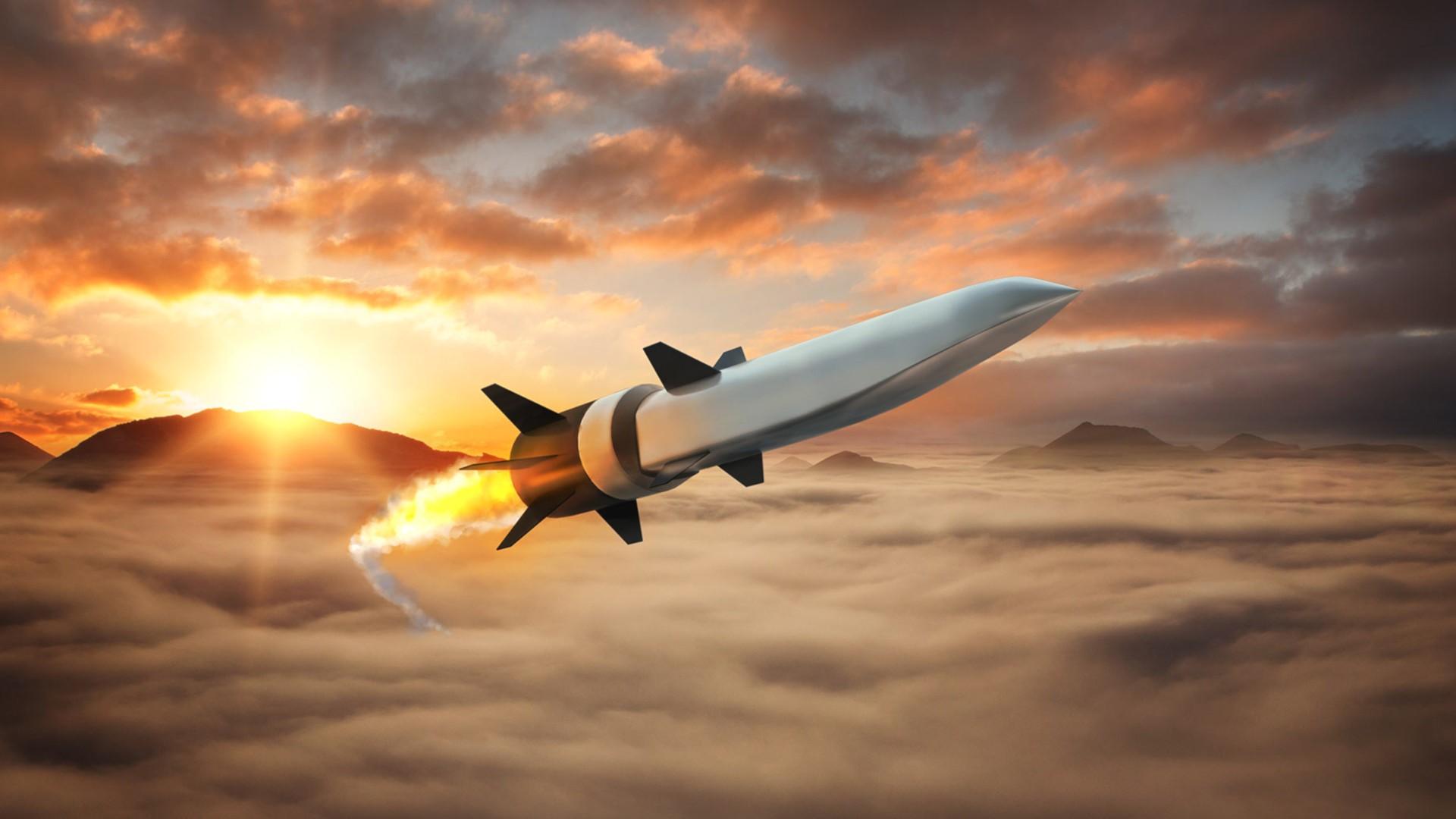
Artist's concept of hypersonic missile.
The U.S. Air Force has taken the first step in an acquisition process that could lead to an air-launched hypersonic conventional cruise missile.
A “sources sought” notice published April 28 on the federal government’s procurement web site kicks off a market research study for the “future hypersonics program.”
The Air Force seeks responses from companies involved in the integration of a Weapon Open System Architecture-based, solid-rocket boosted missile with an air-breathing propulsion system in the second stage.
Lockheed Martin and Raytheon are developing competing demonstrators of such a hypersonic cruise missile under the Defense Advanced Research Projects Agency’s (DARPA) Hypersonic Air-breathing Weapon Concept (HAWC). Flight testing of both versions of HAWC are expected to start later this year.
Another possible competitor for an Air Force cruise missile program could be Boeing. The company’s X-43 and X-51 vehicles demonstrated the viability of scramjet-powered air vehicles.
The market research study follows a series of comments since last June by senior Air Force and defense officials supporting an acquisition program for a hypersonic cruise missile.
Interest in air-breathing hypersonic propulsion appeared to fade when rocket-boosted gliders became the Defense Department’s top priority in 2017. The Defense Department funded operational prototyping programs for three different rocket-boosted gliders, but only the HAWC demonstrator in the scramjet propulsion category.
As late as December 2018, Mike Griffin, director of Defense Research and Engineering, said scramjet-powered cruise missiles were less mature than rocket-boosted gliders.
But wind tunnel test data and rig testing in the first half of 2019 appeared to change the interest level. By June, Will Roper, assistant secretary of the air force for acquisition, technology and logistics, said cruise missile technology had made significant progress. In January, two of Griffin’s subordinates, Mark Lewis and Mike White, confirmed they were building an acquisition program for a hypersonic cruise missile.
Arguments in favor of air-breathing hypersonic technology have expanded beyond the maturity of scramjet propulsion systems. According to Lewis, Mach 5-plus cruise missiles offer greater flexibility and affordability. As they are smaller than rocket-boosted gliders, they are generally cheaper to build and more can be loaded into the weapons bay of a bomber. The typically belly-mounted inlet of a cruise missile also allows the nose to be used to store a seeker.
The market research study proposes a fast schedule for missile development. A preliminary design review is targeted for the fourth quarter of fiscal 2021, less than 18 months away.

Comments
Air breathers are better for air launch, being both smaller and lighter as mentioned in the article are therefore cheaper.
Range is down to the users requirements.